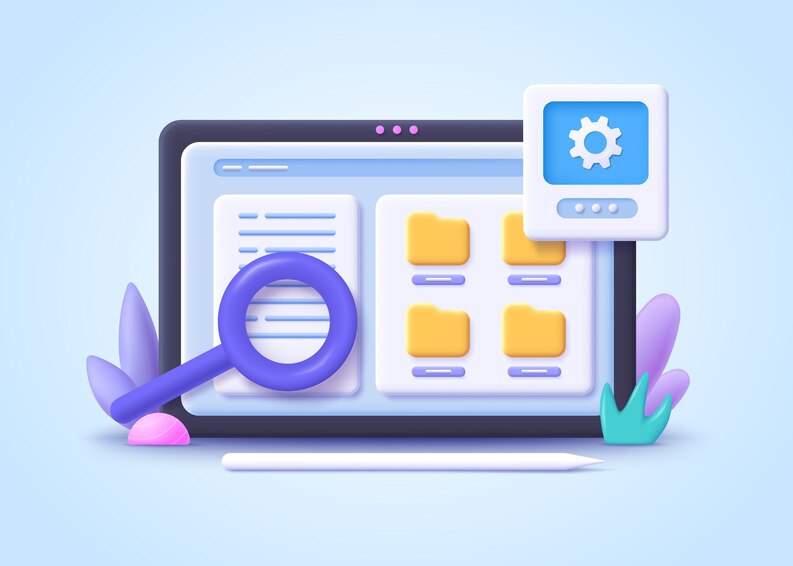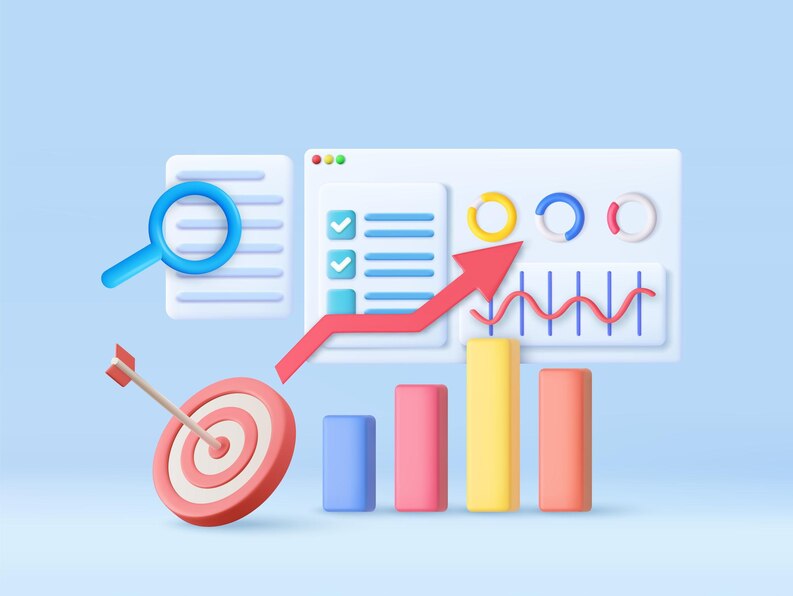Welcome to the world of web optimization, where unlocking the potential of your website can lead to remarkable results. In today’s digital landscape, it’s crucial to leverage effective strategies to increase website traffic with web optimization and attract a broader audience. By implementing proven techniques and optimizing your online presence, you can enhance your search engine visibility, drive organic growth, and ultimately achieve your business goals.
Table of Contents
Increase Website Traffic with Web Optimization
Implementing effective website optimization strategies is crucial in driving organic growth, increasing website traffic, and improving your search engine ranking. By optimizing your website, you can enhance its performance, usability, and visibility, making it more attractive to both search engines and visitors.
Why are website optimization strategies important?
Applying website optimization strategies enables you to maximize your online presence and reach your target audience effectively. By focusing on the right techniques, you can improve user experience, boost website visibility, and attract more qualified traffic to your site.
A well-optimized website not only increases the chances of attracting potential customers but also improves conversion rates, leading to tangible business growth.
Key website optimization strategies
Here are some crucial website optimization strategies that you should consider:
- Keyword Research and Optimization: Identify relevant keywords and incorporate them strategically throughout your website to enhance search engine visibility.
- Optimized Content Creation: Develop high-quality, engaging, and SEO-friendly content to attract both search engines and readers.
- Site Speed Optimization: Ensure your website loads quickly to provide a smooth browsing experience and reduce bounce rates.
- Mobile Optimization: Optimize your website for mobile devices to cater to the growing number of mobile users and improve your search engine ranking.
- User-Experience Enhancement: Create a user-friendly website with intuitive navigation, clear calls-to-action, and compelling visuals to enhance user experience and encourage longer visits.
- Meta Tags and Descriptions: Optimize your title tags and meta descriptions to improve search engine visibility and click-through rates.
- Link Building: Build high-quality backlinks to increase your website’s authority and improve search engine rankings.
By implementing these website optimization strategies, you can significantly enhance your website’s performance, visibility, and traffic.
| Optimization Strategy | Benefits |
|---|---|
| Keyword Research and Optimization | -Increased search engine visibility |
| Optimized Content Creation | -Improved user engagement -Higher search engine rankings |
| Site Speed Optimization | -Reduced bounce rates -Enhanced user experience |
| Mobile Optimization | -Improved mobile user experience -Higher search engine rankings |
| User-Experience Enhancement | -Increased website visit duration -Higher conversion rates |
| Meta Tags and Descriptions | -Improved click-through rates |
| Link Building | -Enhanced website authority -Improved search engine rankings |
These strategies work together to optimize your website for improved visibility, organic growth, and increased website traffic.
Understanding Web Traffic Growth

In today’s digital landscape, web traffic growth is a pivotal factor in establishing a strong online presence and driving organic traffic to your website. As a website owner, it’s essential to understand the concept of web traffic growth and its direct impact on enhancing online visibility and attracting potential customers.
Web traffic growth refers to the steady increase in the number of visitors to your website over time. This influx of visitors can be achieved through various channels, including search engine optimization (SEO), content marketing, social media engagement, and more. By effectively implementing strategies to drive web traffic growth, you can boost your website’s visibility, attract a larger audience, and ultimately increase conversions and revenue.
To better comprehend the significance of web traffic growth, let’s analyze the benefits it provides:
- Enhanced Online Visibility: With increased web traffic, your website gains higher visibility in search engine results pages (SERPs), making it more accessible to potential visitors. This increased visibility creates more opportunities for your target audience to find you.
- Increased Organic Traffic: Growing web traffic organically through SEO strategies improves the quality of your website’s traffic. Organic traffic consists of users who find your website through relevant search queries, making them more likely to engage with your content and convert.
- Improved Search Engine Ranking: As web traffic grows, search engines recognize your website’s popularity and relevance, potentially leading to higher search engine rankings. A higher ranking means more exposure to users searching for products, services, or information related to your industry.
To illustrate the impact of web traffic growth, let’s take a look at the following table, which contrasts two scenarios: one with low web traffic and another with significant web traffic growth:
| Low Web Traffic | Significant Web Traffic Growth | |
|---|---|---|
| Online Visibility | Limited audience reach | Expanded reach to a broader audience |
| Organic Traffic | Minimal organic traffic | Increased organic traffic from targeted users |
| Search Engine Ranking | Low search engine visibility | Improved search engine rankings |
As demonstrated by the table, investing time and effort into web traffic growth yields significant benefits for your website and business as a whole. By implementing effective strategies and optimizing your website for increased traffic, you can establish a strong online presence, attract a larger audience, and ultimately achieve your business goals.
Optimizing Your Website for More Traffic

When it comes to increasing website traffic, optimizing your website is crucial. By implementing various techniques and practices, you can enhance your website’s visibility and attract more visitors. Here, we explore effective strategies to optimize your website for more traffic and improved search engine visibility.
Detailed Techniques for Website Optimization
1. Improving Website Speed:
- Minimize HTTP requests by combining CSS and JavaScript files.
- Optimize images by compressing them without sacrificing quality.
- Enable browser caching to reduce load times for returning visitors.
2. Implementing Responsive Design:
- Create a mobile-friendly and responsive website design to provide a seamless user experience across devices.
- Ensure your website is accessible and properly displayed on various screen sizes.
3. Utilizing On-Page SEO:
- Perform keyword research to identify relevant keywords for your content.
- Optimize meta tags, including title tags and meta descriptions, using target keywords.
- Create high-quality and unique content that satisfies user intent.
4. Enhancing User Experience:
- Ensure easy navigation and intuitive website structure.
- Optimize your website for mobile devices to provide a seamless experience.
- Implement clear calls-to-action (CTAs) to guide visitors and encourage desired actions.
5. Building High-Quality Backlinks:
- Create valuable content that attracts natural backlinks from reputable sources.
- Engage in guest blogging and influencer outreach to increase your website’s exposure.
- Participate in industry-related forums and discussions to establish authority.
| Technique | Description |
|---|---|
| Improving Website Speed | Minimize HTTP requests, optimize images, and enable browser caching to enhance load times and user experience. |
| Implementing Responsive Design | Create a mobile-friendly website design that adapts to different screen sizes, ensuring a seamless experience for all users. |
| Utilizing On-Page SEO | Perform keyword research, optimize meta tags, and create high-quality content to improve search engine visibility. |
| Enhancing User Experience | Ensure easy navigation, mobile optimization, and clear calls-to-action for an improved user experience. |
| Building High-Quality Backlinks | Create valuable content and engage in link-building activities to establish authority and attract natural backlinks. |
By implementing these techniques, you can optimize your website for more traffic and increase your chances of ranking higher in search engine results. Remember, website optimization is an ongoing process, and staying updated with the latest trends and best practices is essential.
Leveraging SEO for Website Traffic

If you want to attract more visitors to your website and boost your online presence, incorporating search engine optimization (SEO) strategies is crucial. SEO for website traffic is the key to improving your search engine ranking and driving targeted visitors to your site.
By implementing effective SEO techniques, you can optimize your website to appear higher in search engine results pages (SERPs) when users search for relevant keywords.
Here are some essential SEO strategies you should consider:
- Keyword Research: Conduct thorough research to identify the most relevant and high-performing keywords for your industry. Incorporate these keywords strategically throughout your website to increase its visibility to search engines.
- On-Page Optimization: Optimize your website’s content, meta tags, headers, and URLs to align with your target keywords. This helps search engines understand the relevance of your website to user queries.
- High-Quality Content: Create informative, valuable, and engaging content that addresses the needs and interests of your target audience. High-quality content not only attracts visitors but also encourages them to stay longer on your website.
- Link Building: Acquire high-quality backlinks from reputable websites in your industry. These backlinks signal to search engines that your website is trustworthy and authoritative.
- User Experience: Enhance your website’s user experience by optimizing page loading speed, improving mobile responsiveness, and ensuring easy navigation. A positive user experience leads to increased website traffic and improved search engine rankings.
By leveraging SEO strategies, you can drive targeted website traffic, increase your online visibility, and ultimately achieve your business goals. Incorporate these tactics into your digital marketing strategy to attract more visitors and maximize your website’s potential.
| Benefits of SEO for Website Traffic | How SEO Boosts Website Traffic |
|---|---|
| 1. Increased organic traffic | 1. Improves search engine ranking |
| 2. Targeted visitors with higher conversion potential | 2. Enhances visibility in search engine results |
| 3. Cost-effective compared to paid advertising | 3. Drives long-term sustainable traffic |
| 4. Builds brand credibility and trust | 4. Attracts high-quality backlinks |
Boosting Website Visibility with Organic Growth
When it comes to increasing your website’s visibility and driving organic traffic, there’s no substitute for the power of organic growth. By focusing on attracting genuine visitors through search engines and other organic channels, you can enhance your online visibility and improve the overall performance of your website.
Organic traffic refers to the visitors who find your website through search engine results, rather than through paid advertisements or other promotional efforts. Driving organic traffic is crucial because it brings in visitors who are actively searching for the products, services, or information you offer. This targeted traffic has a higher likelihood of converting into customers or taking desired actions on your website.
Enhancing online visibility is essential for your website’s long-term success. When your website ranks higher on search engine results pages (SERPs), it becomes more visible to potential visitors. This increased visibility not only drives more traffic to your website but also improves brand awareness and credibility.
So, how can you drive organic traffic and enhance online visibility? Here are a few strategies:
Create Valuable Content
Producing high-quality, relevant, and valuable content that aligns with your target audience’s needs and interests is crucial. This not only attracts organic traffic through search engines but also encourages visitors to stay longer on your site, increasing the chances of conversions and repeat visits. Focus on creating informative blog posts, videos, infographics, and other engaging content that provides real value to your audience.
Optimize for SEO
Implementing search engine optimization (SEO) techniques can significantly improve your website’s visibility in search results. Conduct keyword research to identify relevant and high-ranking search terms that your target audience is using. Then, optimize your website’s meta tags, headers, content, and URLs to include these keywords naturally.
Build High-Quality Backlinks
Backlinks are links from other websites that lead to your site. Search engines consider backlinks as an indicator of your website’s credibility and relevance. Aim to build high-quality backlinks from reputable sources in your industry. This can be achieved by creating exceptional content that other websites naturally want to link to, or by reaching out to relevant websites to request backlinks.
Engage on Social Media
Social media platforms provide an excellent opportunity to engage with your target audience, increase brand visibility, and drive traffic to your website. Regularly post engaging content, respond to comments and messages, and participate in relevant discussions to establish your brand as an authority in your industry. Incorporating social sharing buttons on your website also encourages visitors to share your content, further amplifying its reach.
Measure and Analyze
To further enhance your website’s visibility and organic traffic, it’s essential to measure and analyze your efforts. Utilize tools like Google Analytics to track key metrics such as website traffic, bounce rate, and conversions. By analyzing this data, you can identify areas for improvement and fine-tune your optimization strategies to achieve even better results.
Implementing these strategies will help you drive organic traffic, enhance your online visibility, and ultimately increase the success of your website. By consistently delivering valuable content, optimizing for SEO, building high-quality backlinks, engaging on social media, and measuring your efforts, you can position your website for long-term growth and success.
Benefits of Organic Traffic
| Benefits | Description |
|---|---|
| Higher Conversion Rate | Organic traffic tends to have a higher conversion rate compared to paid traffic. |
| Long-Term Growth | Organic traffic builds your website’s authority and reputation, leading to sustained growth over time. |
| Cost-Effective | Driving organic traffic doesn’t require ongoing advertising expenses, making it a cost-effective strategy. |
| Improved Brand Awareness | Higher online visibility through organic traffic increases brand awareness among your target audience. |
| Higher Search Engine Rankings | Organic traffic contributes to improved search engine rankings, leading to even more visibility and traffic. |
Key Factors for Increasing Web Visitors
Increasing web visitors is an essential goal for any website looking to boost its online presence and drive organic growth. To achieve this, it’s crucial to focus on several key factors that directly impact website traffic. By optimizing these factors, you can attract more visitors and increase your chances of converting them into loyal customers.
User Experience: Maximizing the user experience is paramount for increasing web visitors. When visitors land on your website, they expect a seamless browsing experience that is fast, intuitive, and visually appealing. Ensure that your website is mobile-friendly, loads quickly, and has easy navigation to keep visitors engaged and encourage them to explore further.
Quality Content: Providing high-quality, informative, and engaging content is a powerful way to attract and retain web visitors. Create content that addresses your target audience’s pain points, offers valuable insights, and solves their problems. Be consistent with your content strategy and consider incorporating various formats such as blog posts, videos, infographics, and podcasts to cater to different preferences.
Social Media Engagement: Harness the power of social media platforms to increase web visitors. Develop a strong social media presence by actively engaging with your audience, sharing valuable content, and promoting your website. Encourage social sharing and interactions through contests, giveaways, and user-generated content. Leverage social media advertising to reach a broader audience and drive traffic back to your website.
Comparison: User Experience vs. Quality Content vs. Social Media Engagement
| Factors | User Experience | Quality Content | Social Media Engagement |
|---|---|---|---|
| Importance | High | High | High |
| Description | Optimizing website design, navigation, and mobile-friendliness | Creating valuable, informative, and engaging content | Actively engaging with the audience on social media platforms |
| Impact on Web Visitors | Enhanced user satisfaction and increased time spent on the website | Attracts and retains visitors by providing valuable information | Expands reach, drives traffic, and encourages social sharing |
By prioritizing user experience, quality content, and social media engagement, you can significantly increase web visitors and create a strong online presence for your website. Remember to regularly analyze your website’s performance and adapt your strategies to stay ahead of the competition.
The Role of Content Marketing in Driving Traffic
Content marketing plays a crucial role in enhancing online visibility and driving website traffic. By creating valuable and engaging content, you not only attract and retain your target audience but also improve your search engine ranking. With effective content marketing strategies, you can establish your brand as an authority in your industry and increase organic traffic to your website.
Creating Compelling Content
Compelling content is the foundation of successful content marketing. By producing high-quality articles, blog posts, videos, and other forms of content, you can capture the attention of your audience and encourage them to spend more time on your website. Engaging content is more likely to be shared on social media platforms, expanding your reach and driving additional traffic to your website.
Optimizing Content for SEO
Optimizing your content for search engines is essential for enhancing online visibility and attracting organic traffic. By conducting keyword research and using relevant keywords throughout your content, you can improve your website’s ranking on search engine results pages. Additionally, optimizing meta tags, headings, and alt text for images can further enhance your website’s visibility to search engines.
Utilizing Different Content Formats
Diversifying your content formats can help attract a wider audience and drive more traffic to your website. Consider creating infographics, podcasts, and interactive content to cater to different preferences and increase engagement. Additionally, offering downloadable resources such as e-books or whitepapers can incentivize visitors to provide their contact information, enabling you to nurture leads and generate repeat traffic.
Promoting Your Content
Creating exceptional content is only half the battle. To drive traffic to your website, you must also promote your content effectively. Utilize your social media platforms, email newsletters, and influencer partnerships to distribute and amplify your content. Encouraging social sharing and providing easy sharing buttons on your website can also help extend the reach of your content and attract new visitors.
| Benefits of Content Marketing in Driving Traffic | Examples |
|---|---|
| Increase organic traffic | Organic search traffic increased by 50% within the first month of implementing a content marketing strategy. |
| Establish brand authority | Industry-leading publications regularly feature our brand’s thought leadership content, driving traffic to our website. |
| Enhance social media engagement | Engaging content resulted in a 300% increase in social media shares, driving significant traffic to our website. |
| Improve search engine ranking | By optimizing our content for SEO, we achieved a top-three ranking for our target keywords, resulting in a significant boost in website traffic. |
Utilizing Social Media for Traffic Generation
Social media platforms have revolutionized the way businesses connect with their target audience. With millions of active users, platforms like Facebook, Instagram, and Twitter provide a fertile ground for enhancing online visibility and driving website traffic. By utilizing social media effectively, you can reach a broader audience and create a strong online presence.
Engage and Connect with Your Audience
Building a strong social media presence starts with engaging your audience and forging meaningful connections. Regularly share valuable and relevant content that resonates with your target audience. Encourage comments, shares, and interactions to generate buzz and increase your reach. By establishing a genuine connection with your followers, you can drive traffic to your website and enhance online visibility.
Create Shareable and Engaging Content
In the age of social media, content is king. To maximize your online visibility, focus on creating shareable and engaging content that captivates your audience. Utilize images, videos, and infographics to make your content visually appealing and easily digestible. Utilize catchy headlines and compelling captions to grab attention and encourage users to click through to your website. By providing valuable and shareable content, you can leverage social media platforms to generate traffic and increase brand awareness.
Harness the Power of Influencer Marketing
Influencer marketing has become a powerful tool for boosting online visibility and driving traffic. Collaborating with influencers who have a significant following and align with your brand can introduce your business to a wider audience. By partnering with influencers, you can tap into their established credibility and reach, gaining access to their loyal fan base. This can result in increased website traffic and enhanced online visibility.
Take Advantage of Paid Advertising
Social media platforms offer a variety of paid advertising options that can help boost your website traffic and enhance online visibility. Platforms like Facebook and Instagram allow you to target specific demographics, interests, and behaviors, ensuring that your ads reach the right audience. By investing in paid advertising, you can increase brand exposure, attract more visitors to your website, and ultimately drive conversions.
By effectively utilizing social media platforms, you can enhance your online visibility and drive a significant amount of traffic to your website. Engaging with your audience, creating shareable content, harnessing influencer marketing, and leveraging paid advertising are all strategies that can give your website the visibility it needs to thrive in the digital landscape.
Measuring and Analyzing Web Traffic
To improve search engine ranking and optimize your website’s performance, it is essential to measure and analyze web traffic. By monitoring various metrics and gathering valuable insights, you can identify areas for improvement and make data-driven decisions to enhance your online presence.
Measuring Web Traffic
One of the primary ways to measure web traffic is to utilize web analytics tools. These tools provide valuable information about your website visitors, including their demographics, behavior, source of traffic, and engagement metrics. By using tools like Google Analytics, you can gain a comprehensive understanding of how users interact with your website and make data-backed optimizations to improve their experience.
Key Metrics to Consider
When measuring web traffic, it is crucial to focus on key metrics that indicate the effectiveness of your optimization efforts. Some essential metrics to consider include:
- Number of Visits: This metric gives you an overview of the total number of visitors to your website. By tracking this, you can analyze if there is an upward trend in traffic.
- Pageviews: Pageviews determine the number of times a specific page has been viewed. It helps you understand which pages are most popular and engaging for your audience.
- Bounce Rate: Bounce rate signifies the percentage of visitors who navigate away from your website after viewing only one page. A high bounce rate may indicate a need for improved website usability and content relevance.
- Conversion Rate: The conversion rate measures the percentage of website visitors who complete a desired action, such as making a purchase or submitting a form. Monitoring the conversion rate helps you evaluate the effectiveness of your website’s conversion funnels.
- Referral Traffic: Referral traffic shows you which websites are driving visitors to your site. It allows you to identify successful partnerships or potential areas for improvement.
Analyzing Web Traffic
Once you have gathered data on web traffic, the next step is to analyze it to gain valuable insights. By diving deep into the metrics and trends, you can uncover patterns, identify bottlenecks, and discover new opportunities for optimization.
Analyzing web traffic allows you to:
- Identify popular content: Determine which pages or blog posts are attracting the most visitors and generating high engagement. This insight can help you create more of what your audience wants.
- Spot performance issues: Discover slow-loading pages, broken links, or other technical issues that may negatively impact user experience and search engine ranking. Addressing these issues promptly can improve website performance.
- Optimize conversion funnels: By analyzing the conversion rate at each stage of your website’s funnel, you can identify areas of improvement and implement strategies to increase conversions.
- Understand user behavior: Analyze user behavior, such as time spent on pages, click patterns, and navigation paths. This knowledge can help you optimize your website’s structure and layout to provide a seamless user experience.
- Track marketing campaigns: Measure the effectiveness of your marketing efforts by analyzing how different channels and campaigns contribute to website traffic and conversions.
In conclusion, measuring and analyzing web traffic is crucial for improving search engine ranking and optimizing your website’s performance. By leveraging web analytics tools, monitoring key metrics, and gaining insights into user behavior, you can make informed decisions to enhance your online presence and attract more targeted traffic.
Conclusion
In conclusion, implementing effective web optimization techniques is crucial for increasing website traffic and achieving organic growth. By optimizing your website through strategies like enhancing user experience, leveraging SEO practices, and creating valuable content, you can improve your search engine ranking and attract more visitors.
By driving organic traffic and enhancing online visibility, you can boost your website’s performance and reach a wider audience. Additionally, utilizing social media platforms and measuring web traffic is essential for identifying areas of improvement and further optimizing your website’s performance.
Remember, web optimization is an ongoing process that requires continuous monitoring and adaptation. By staying abreast of the latest trends and continually optimizing your website, you can ensure a steady increase in website traffic and overall business growth.




